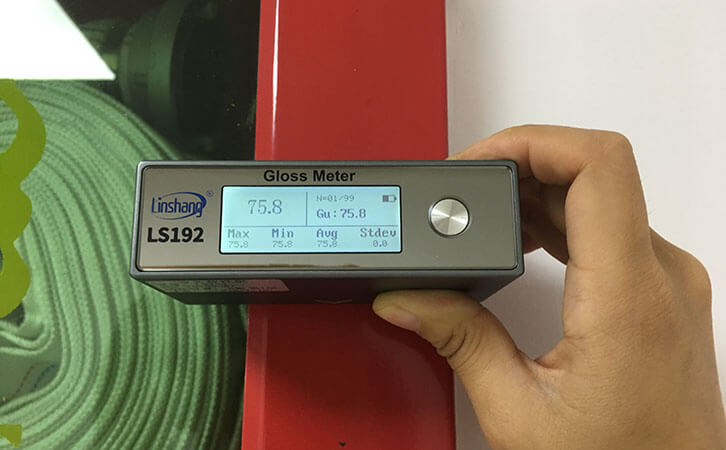Material Gloss and Principle of Gloss Meter
1. What is the gloss of material?
Gloss is a feeling given to people. It is related to the ability of the surface to reflect light. There are too many influential factors on the subjective evaluation of gloss. In the industrial production process, if you want to accurately evaluate the gloss characteristics of products, you need to pass certain standards.
Glossiness is the property of directional selective reflection on the surface of an object. This property determines the degree of strong reflected light or object mirroring that can be seen on the object surface. Generally, the gloss of a material is represented by the gloss of the mirror surface. The so-called specular glossiness refers to the ratio of the sample specular reflectance to the specular reflectance of the reference surface under the same conditions at a predetermined incident angle. It is expressed as a percentage. Generally, the percent sign is omitted and the gloss unit is used (GU).
2. Measuring principle of gloss meter
Gloss meter is generally composed of two parts: probe and display surface. The above is a figure show the gloss measurement. The instrument consist of built-in an incandescent light source, a condenser and a projector or source lens. The incident light beam generated by these instruments is directly irradiated on the sample. A sensitive photo detector collects the reflected light and generates an electrical signal. The amplified signal excites an analog or digital display meter to display the gloss value.
When using the gloss meter, we just need to place it on a black glass reference standard plate, turn on the instrument switch. The instrument will perform a self-calibration. When the instrument fails the self-calibration, it will prompt to clean the standard board. After self-calibration, the instrument can be placed on the surface of the test object to display the gloss value. It needs to be explained here that the gloss value varies depending on the angle of the incident light. Common gloss meters have three measurement angles: 20 °, 60 ° and 85 °. When the angle of incidence increases, the gloss value of any surface also increases. When measuring the specular gloss, the angle of incident light must be determined. When expressing the specular gloss of a material, the angle must be stated.
3. How to choose the measurement angle of the gloss meter?
As for which measurement angle is best for your materials, there is no uniform national standard. The general angle on the market is a 60-degree angle. Like the general-purpose 60-degree gloss meter LS192 from Linshang Technology, the measurement range reaches 1000GU. High-gloss and low-gloss materials can be tested because the gloss is a relative value. There is no uniform standard in the industry, the LS192 gloss meter can be used for testing. If the industry has a uniform standard, it is best to use the same angle of testing. Therefore, when selecting the measurement angle, you should choose different instrument according to different situations.
4. Operation method of LS192 gloss meter
The instrument has only one power button. Press the power button to turn on the instrument. After the instrument is turned on, you will be prompted to perform the calibration. The interface can display real-time value, current record value, maximum value, minimum value, average value, average difference value and number of tests and statistics. After the test is completed, simply close the instrument on the base of the standard board and it will automatically shut down.
We don’t need to press the button when use LS192 gloss meterto make the measurement, just put the instrument on the tested material, the data will be displayed on the interface. Press the power button to record the current test data and automatically calculate the maximum, minimum, average and mean square error.
